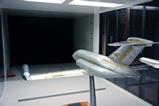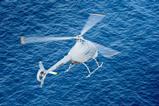Rolls-Royce will over the next five years introduce a series of performance upgrades across its Trent widebody engine family designed to improve fuel burn and durability.
Part of an over-£1 billion ($1.26 billion) product development programme, the UK propulsion specialist will insert advanced coatings and high-temperature materials into the in-production engines, says chief customer officer Ewen McDonald.

Durability concerns related to operations in hot and dusty environments have dogged the higher-thrust XWB-97 for the Airbus A350-1000 in recent years, with Emirates Airline president Sir Tim Clark particularly outspoken on the issue.
McDonald says the engine maker plans a series of technology insertions for the powerplant running through until 2028 which “will double the time on wing in the harshest environments”.
Even operators in “benign” environments, will see a 50% improvement in time on wing, he adds.
While later steps will focus on higher-temperature materials and improved cooling technologies, the initial enhancement will see the introduction of so-called CMAS-resistant coatings to the turbine blades, designed to better withstand operations in sandy environments.
An improvement programme for the XWB-84 is already in progress which should deliver a 1% fuel-burn reduction when it rolls out in 2025.
Although the XWB-84 “is already known as the best new-generation widebody engine”, McDonald says Rolls-Royce wants to “ensure that remains the same”.
Previously known as the EP – or Enhanced Performance standard – Rolls-Royce has since dropped that designation, he adds.
Aerodynamic improvements to the turbine are responsible for the better fuel burn and the improved engine has been validated through flight testing, he adds.
“I’m very confident in this,” he says. “Importantly this will not impact the durability of this engine. In fact the turbine runs at a cooler temperature.”

A durability enhancement to double the time on wing of the Trent 7000 for the Airbus A330neo entered service in August 2022, and boroscope inspections of in-service engines – including those from a customer in the Middle East – suggests the upgrade “will not only achieve the doubling time it could even go beyond that”.
A second turbine blade improvement package is now in the works, says McDonald, which will increase time on wing by a further 30%.
To achieve that goal Rolls-Royce is “taking some weight out” of the blades to destress them, alongside improving the nozzle guide vanes and coatings in the turbine. Service entry is anticipated in 2026, he says: “We can get that improvement out really quite quickly.”
Operators of the Trent 1000, meanwhile, are still waiting for an upgrade programme to be approved by regulators, a milestone McDonald expects later this year.
But that engine, an option on the Boeing 787, will also benefit from the same enhancement as its sister powerplant.
McDonald is hopeful that Rolls-Royce’s continued investment in the Trent 1000 will reverse the engine’s recent run of losses to the rival GE Aerospace GEnx on the 787.
That includes Thai Airways International’s selection of the US-built powerplant for its incoming fleet of -9 Dreamliners, even though its existing -8s are equipped with Trent 1000s.
“We are absolutely committed to the 1000,” says McDonald. “This is a long-term programme and we will bounce back; with the investments we are marking today we are going to be a really fierce competitor.”































